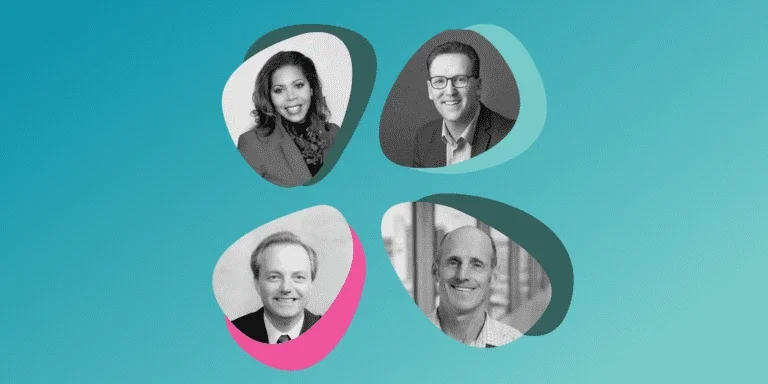Sometimes you have to stop in order to move forward. Uniting diverse stakeholders around a breakthrough begins by uncovering where divisions lie, discovering common ground, and forging a sense of shared passion and a commitment to unified purpose and action.
As Director of The Rockefeller Foundation’s Health Equity theme, Dr. Tim Evans saw this process play out first-hand. A gathering of stakeholders at the Bellagio Center that focused on expanding vaccine access for children exposed deep-seated disagreement on how to proceed, leading to a complete stalemate.
Yet the impasse at the Bellagio Center was just the first step in the journey. Efforts to address these disconnects not only built consensus but, at a second convening a few months later, launched a new era of billion-dollar global health commitments. The participants from that initial convening became the founding members of Gavi, the Vaccine Alliance, which has vaccinated a billion children and prevented more than 17.3 million deaths.
What was happening in vaccine development and access when you came to The Rockefeller Foundation in the 1990s?
The field was on the downswing after the 1980s efforts to ensure universal childhood immunization. The political momentum for universal child immunization had begun to wane and vaccine coverage in many countries was falling.
The Rockefeller Foundation had a health equity strategy focused on strengthening pipelines for new vaccines, therapeutics, and diagnostics to address major health issues that were not necessarily pharmaceutical shareholder priorities. These product development partnerships mapped out a new, global model of development and discovery, and they drew on private-sector resources and negotiated agreements to address causes of disease in low- and middle-income countries. But access to and coverage of existing vaccines was still declining, and public and private sector participation was needed to address them.
It required humility and the willingness to act on the idea that every child’s life matters. Sometimes what gets called outlandish is actually the bare minimum of what needs to be done.
Dr. Tim EvansCo-founderGavi
What happened when you brought stakeholders together at the Bellagio Center to move the issues forward?
We started by convening a working group on improving vaccine delivery with representatives from the World Bank, WHO, the UNDP, UNICEF, academia, and the private sector. This in turn led us to hold a convening of stakeholders at the Bellagio Center in order to build consensus on moving toward universal coverage of essential vaccines for children.
By the third day of the convening, the group was in complete disagreement. A line was drawn between the pragmatists — who pushed for $10 million and a Geneva-based secretariat with strong private-sector leadership — and the dreamers, who felt that if we weren’t willing to make a major investment, we might as well just go home. Their lead instigator, someone from Rotary International who had mobilized hundreds of millions of dollars for polio eradication, said, “We’re doing 6, 8, maybe 10 different antigens. Realistically, this is going to take billions of dollars.”
The pragmatists felt the dreamers were ignoring what was feasible, and the dreamers felt the pragmatists were ignoring what was possible. It was “we can’t” vs. “we must,” and the convening ended in a stalemate.
How did the group bridge this profound disconnect?
Not long after the convening, I had breakfast with Tore Godal, who had just retired as the head of Tropical Disease Research at WHO. He was interested in helping move the working group beyond this impasse, so we brought him in as a consultant. His energy and attention sparked renewed collaboration, and we were suddenly getting updates and reports at a cadence and quality level that we hadn’t seen from the working group in the past.
We held a second convening in Seattle that summer to try to bridge the gaps uncovered at the Bellagio Center. The evening before it opened, Bill Gates, Sr. came by. He said that the Bill and Melinda Gates Foundation was prepared to put $750 million behind the initiative. We were stunned, but Tore immediately called an old colleague who was then a chief advisor to Norwegian Prime Minister Jens Stoltenberg. Tore woke him up at 5 a.m. and said, “Can Stoltenberg put in $250 million so that we could announce a billion dollar commitment?” He called back an hour later and said, “You can count on us.”
The next morning, we kicked off this second convening by giving the participants the good news. The mood in the room changed instantly, going from acrimony to this jubilant sense of what we could do together. This was the first billion-dollar global health initiative. A big investment in global health prior to that time was usually in the range of $5 to $10 million. So it ushered in a new era of major partnerships.
So now we had funding. How could we use it to make the kind of big impact on child vaccine coverage that the dreamers had been pushing for? This is where Gavi came in. It was at the Seattle convening that we really defined Gavi’s primary mechanism, which is pooled procurement.
Pooled procurement comes down to volume. Gavi tallies up the number of children in low- and middle-income countries who would be eligible for vaccines and says to manufacturers, “We need a hundred million doses of vaccine X or 50 million doses of vaccine Y. What prices can you give us?” By pooling the purchases, Gavi drives those prices down, subsidizing the cost of vaccines and enabling countries to get access to vaccines at a fraction of what they would pay on their own.
What lessons does this process hold for others trying to tackle major global challenges?
We were lucky. Bill Gates, Sr. believed passionately that all children, no matter where they are born should have the same opportunities. The Bill & Melinda Gates Foundation was a simple, kitchen-table philanthropy at the time, so we didn’t have to go through two years of writing proposals and massive technical reviews. There was a sense of “These people are credible, they’re doing something that’s really important, so let’s trust them and give them a big boost.”
What the dreamers brought was a sense of inspiration, a belief that taking big risks is needed to address global problems at scale. Too often, people in institutions become trapped by their own limited sense of the possibilities. Thinking big is not always encouraged, and sometimes it gets squeezed out by people’s sense of what can be accomplished in the short term.
The key to this transformative action was a shared sense of possibility, urgency, and values. “It required humility and a willingness to act on the idea that every child’s life matters,” Evans said. “Sometimes what gets called outlandish is actually the bare minimum of what needs to be done.“
Learn More:
- Read a short history of Gavi’s founding from the Bellagio Center archives.
- Check out Gavi’s award-winning digital platform for vaccine news.

